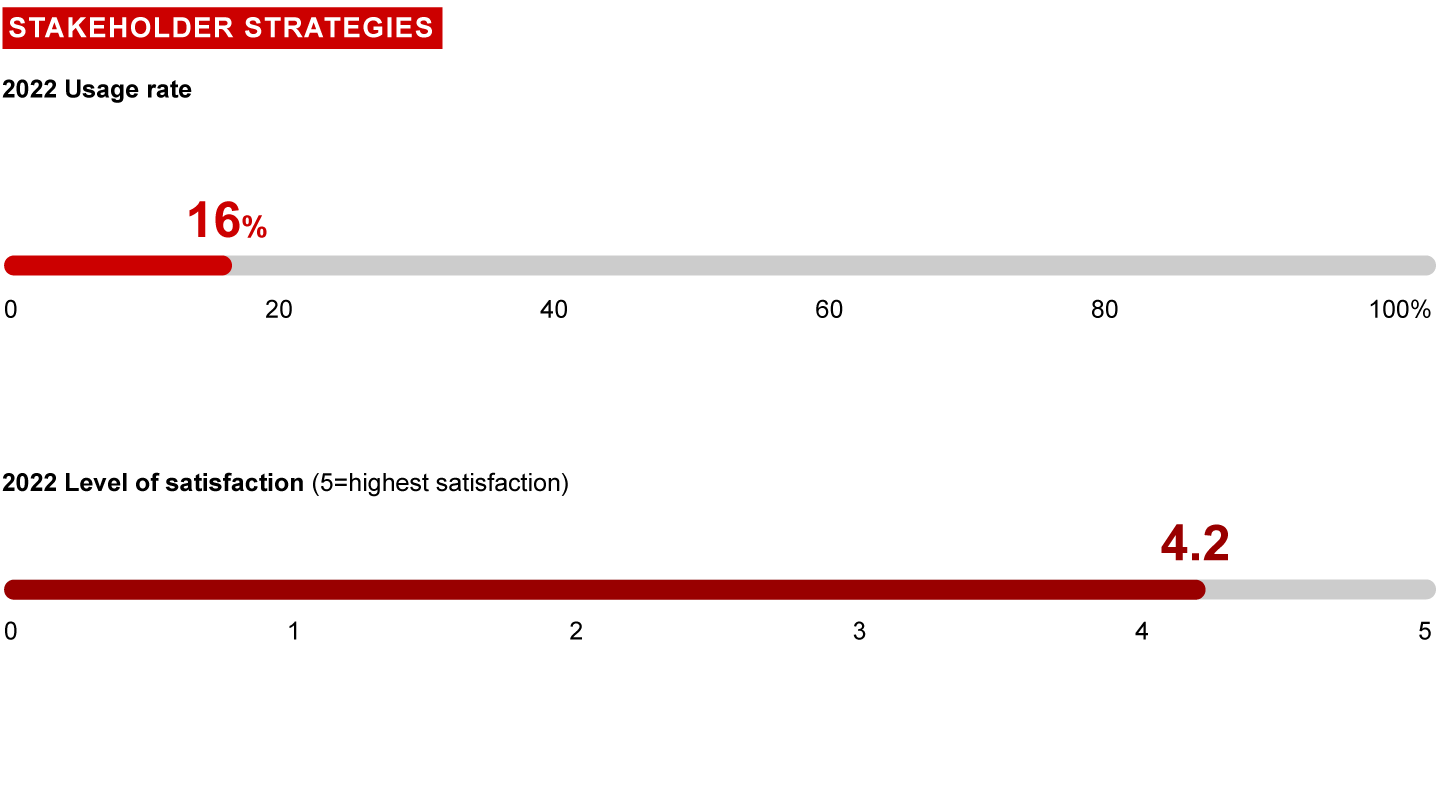Management Tools
What Are Stakeholder Strategies?
Stakeholder strategies are a way to grow value for a company’s full business system (including shareholders, customers, employees, suppliers, and communities). While traditional strategies aim to maximize economic value for shareholders, stakeholder strategies create common purposes and mutual benefits among stakeholders so that the entire system thrives and sustainably generates greater value.


Companies with strong stakeholder strategies increase engagement and transparency about the company’s purpose, how it creates value, and how it contributes to society. They embrace the exchange of ideas, asking stakeholders to help them understand the right way to meet their needs. Social responsibility and purpose are at the core, not the periphery, of stakeholder strategies. Nonfinancial reports (e.g., social, environmental, and sustainability reports) are the tools companies commonly use to formalize a firm’s purpose, mission, and values, to drive accountability, and to become an open and responsive organization that harmonizes the interests of various stakeholders.
How Are Stakeholder Strategies Implemented?
Companies that leverage stakeholder strategies turn debates about corporate purpose into meaningful action. This process typically involves the following steps:
- Start by understanding objective third-party ratings of the company’s current performance with stakeholders
- Develop your own model—using proprietary insider data—of the company’s current performance with stakeholders
- Develop deep understanding of stakeholders and their needs
- Create an improved stakeholder strategy and a business system to support it, including:
- A leadership team and culture that develop and champion the stakeholder strategy
- Management systems—including strategizing and budgeting—to prioritize stakeholders, establish goals and metrics, and allocate resources to opportunities with the greatest multiplier effects across stakeholders
- Organizational structures and accountabilities that increase cross-stakeholder collaboration
- Talent strategies that attract and utilize people with deep and diverse insights into the needs of targeted stakeholders
- Business processes that focus on holistic stakeholder outcomes rather than individual components
- Mobilize against improvement areas including agile testing, adapting to unexpected effects and side effects, and scaling up solutions that affordably enrich the lives of stakeholders
Related Topics
What Are Common Uses of Stakeholder Strategies?
Stakeholder strategies develop innovative business approaches that can generate greater benefits for the company and for society. Direct financial impacts include risk mitigation benefits (e.g., fewer labor problems, lower costs of litigation) and greater growth opportunities (e.g., more customers, greater customer spending). Indirect financial impacts include easier access to capital, better supplier relationships, more welcoming communities, and retention of quality talent.

Management Tools & Trends 2023
On the 30th anniversary of our survey, managers seem surprisingly upbeat.